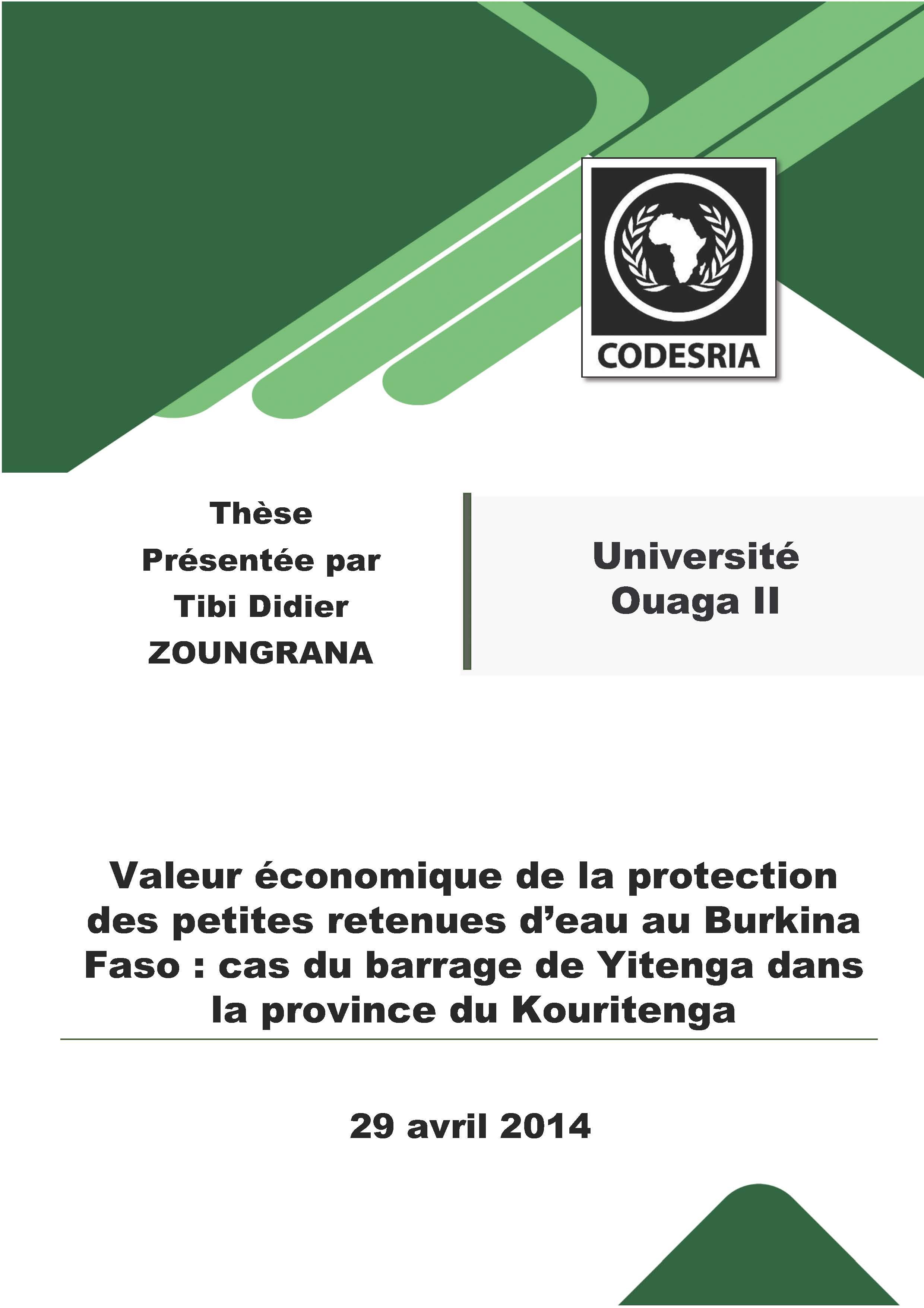Valeur économique de la protection des petites retenues d’eau au Burkina Faso : cas du barrage de Yitenga dans la province du Kouritenga
Keywords:
Contingent valuation, WTP, WSC, Profit, Dam of YitengaSynopsis
The question of the management and protection of water resources is in the center of actual priorities of many countries particularly Sahelian countries like Burkina Faso. The main objective of this thesis is to analyze the profits of Yitenga’s dam protection for the border populations. For that, the study has used a process that combined statistical and econometric analysis of panel data coming from border households. The econometric analysis has been possible through the use of three models: Heckman model of two steps in panel data to determine the explanatory factors of the involvement of users to the improvement of the dam quality, the logit model multinomial unordered for the identification of determining factors of the implementation of waters and soils conservation (WSC) techniques and the model of the agricultural household in order to do a robust assessment of the value of Yitenga’s dam. The analysis has permitted to note that variables as the household chief sex, the profession, theactivities around the dam, the education, WSC practice and monetary transfers contribute significantly to explain the willingness to pay (WTP). Also, very few households have implemented WSC techniques in the area. Only 20.69% of the households investigated practiced at least one technique. It evident from the results that the stony cords, the zai, the grass strips and the quick hedges are the more adopted. Finally, the model of the agricultural household, valued by the SURE method permitted to calculate the surplus of the producer-consumer and the total value of the dam that rise to 63 289 411. 39 FCFA.
Downloads
References
Abdelkrim A. (2000), La modélisation des préférences et le bien-être des ménages en Pologne. Département d’Économique et CREFA. Université Laval Mars 2000 No 00-05.
ACTUS (2007), Ressources en eau et Notions d’écologie, Ecologie 2007, 74p.
Adegbidi A. et al (1999), “Farmers’ perceptions and substainable land use in the Atacora, Benin”. CREED working paper, No 22. Collaborative research in the Economics of environment and developement, IIED: London.
Adelski E. et Bissala I. (2002), Final qualitative evaluation: food security initiative in Niger, Executed in collaboration with Africare, CARE International, Catholic Relief Services, and Helen Keller Internationa, 113p.
Adesina A. A.; Mbila D.; Nkamleu B. G. et Endamana D. (2000), Econometric analysis of the determinants of adoption of alley farming by farmers in the forest zone of southwest Cameroon. Agriculture, Ecosystems and Environment 80, pp 255-256.
Akinola A. A. (1987), An application of probit analysis to adoption of tractors hiring service scheme in Nigeria. Oxford Agrarian studies, 17, 0-82.
Aklilu A. et Jan de G. (2006), Determinants of adoption and continued use of stone terraces for soil and water conservation in an Ethiopian high land watershed. Ecological, economics,9p.
Alexis C. (2009), Etat des lieux de la situation hydrique en Afrique subsaharienne Document de travail/Ierpe: DT.1.2009 Bruxelles, 29 janvier 2009, 52p.
Alinsato A. S (2005), Analyse du consentement à payer pour la conservation des Sols, Université de Cocody, 25p.
Allet J., Dubois J.L. et Mahieu F.R. (2003), « Le développement socialement durable : un moyen d’intégrer capacités et durabilité », communication for the 3rd Conference on the Capability Approach, University of Pavia, 6-9 september 2003.
AMCOW (2012), Rapport de situation sur l’application des approches intégrées de la gestion des ressources en eau en Afrique, Edition : Catherine McMullen, 101p.
Amemiya T. (1981), Quantitave Response Models, Journal of Economic Literature, vol 19.
Amemiya T. (1985), Advanced Econometrics, Cambridge, Massachusetts, Harvard University Press.
Amigues J. P., Desaigues B. et Vuong Q. (1996), L’évaluation contingente : controverses et perspectives. Cahiers d’Economie et de Sociologie Rurales, n° 39-40, p 124-150.






